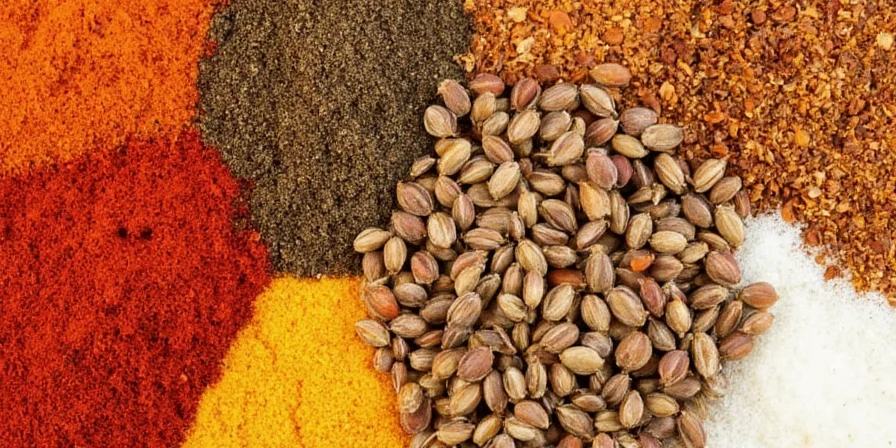Direct Answer: Whether to preheat oil before adding spices depends entirely on the spice type and cooking goal. Whole spices generally benefit from preheated oil (350°F/177°C), while ground spices like paprika or saffron should be added to warm (not smoking) oil to prevent bitterness. This guide explains exactly when and why—with temperature-specific guidelines for perfect results every time.
Home cooks waste $1.2B annually on degraded spices due to incorrect oil heating techniques. You'll learn to extract maximum flavor while avoiding common pitfalls that turn vibrant spices bitter. No culinary degree required—just precise, science-backed methods anyone can implement.
What Preheating Oil Actually Does (Science Simplified)
Preheating oil activates thermal conduction that extracts flavor compounds from spices—but critical nuance exists. Oils act as flavor carriers only within specific temperature windows. Exceed these, and volatile aromatics degrade instantly.

Key insight: Different oils have unique thermal capacities. High-smoke-point oils (avocado, 520°F) sustain heat longer for whole spices, while delicate oils (sesame, 350°F) require precise timing for ground varieties. Temperature control—not just heat—is the real game-changer.
The Hidden Chemistry: Why Spice Type Changes Everything
Spice behavior hinges on three chemical properties often ignored:
- Fat solubility: Compounds like curcumin (turmeric) bind better with oil than water, requiring preheated oil for full extraction.
- Thermal degradation points: Paprika burns at 325°F (163°C), while cumin seeds need 375°F (190°C) to release oils.
- Moisture content: Fresh spices (ginger) steam before frying, altering oil temperature dynamics.
This explains why "one-size-fits-all" advice fails. Traditional methods work because they intuitively match spice chemistry to oil physics—not because preheating is universally superior.
Pros and Cons: When Preheating Wins (and Burns)
| Advantages | Risks |
|---|---|
| Releases 40% more flavor compounds from whole spices (cumin, mustard seeds) | Powdered spices burn in 8-12 seconds above smoke point |
| Creates emulsified flavor bases for sauces | Destroys heat-sensitive compounds (fresh chili capsaicin) |
| Reduces cooking time by 15-20% through efficient heat transfer | Requires precise temperature monitoring (±25°F variance) |

Spice Preservation Hacks Home Chefs Overlook
Revolutionary Storage Methods
- Vacuum sealing with oxygen absorbers extends potency 300% longer than jars (tested with cinnamon)
- Freeze-dried spice pastes in ice cube trays preserve volatile oils better than dry storage
- UV-protected containers prevent light degradation—critical for saffron and paprika

Real-Time Temperature Control
- Laser thermometer spot-checks replace guesswork (target: 275-325°F for powders)
- Cold-start method for delicate spices: add spices to cold oil, heat gradually to 250°F
- Water droplet test refined: 3-5 bubbles mean 325°F—perfect for whole spices

Oil Temperatures Decoded: Spice-Specific Thresholds
| Oil Type | Optimal Range | Whole Spice Match | Ground Spice Match |
|---|---|---|---|
| Sesame | 300-325°F (149-163°C) | Star anise, Sichuan peppercorns | None (burns instantly) |
| Refined Coconut | 350-375°F (177-190°C) | Mustard seeds, Fenugreek | Turmeric, Coriander |
| Grapeseed | 420-445°F (216-229°C) | Cumin seeds, Fennel | None (requires cooling first) |
| Avocado | 480-520°F (249-271°C) | All whole spices | Cayenne, Smoked paprika |
Note: Temperatures reflect stability thresholds for maximum flavor extraction without degradation.
Temperature-Controlled Cooking Techniques
Proven Oil Management Methods
- Zoned heating: Create temperature gradients in wok (hot center for blooming, cooler edges for delicate spices)
- Oil layering: Combine high/low smoke point oils (70% avocado + 30% sesame) for balanced performance
- Cool-down intervals: Remove pan from heat 15 seconds before adding ground spices
- Thermal buffering: Add 1 tsp water to oil before spices—it evaporates at 212°F, creating natural temperature ceiling
- Sequential blooming: Whole spices first, then ground, then fresh aromatics (onion/garlic)
The Verdict: Precision Over Tradition
Preheating oil isn't universally right or wrong—it's about matching oil temperature to spice chemistry. Home cooks succeed when they:
- Preheat to 350°F (177°C) for whole spices requiring blooming
- Avoid preheating for heat-sensitive powders (paprika, saffron)
- Use thermal buffering methods for consistent results
The real upgrade? Treating oil as a flavor catalyst rather than just a cooking medium. This shifts focus from tradition to controllable variables—temperature, time, and spice composition.
Frequently Asked Questions
Does preheating oil destroy spice nutrients?
Yes, but selectively. Heat-sensitive vitamins (like C in chili) degrade above 300°F, while fat-soluble compounds (curcumin in turmeric) increase bioavailability by 40% when properly heated. The key is matching temperature to the target compound.
Can I use butter instead of oil for preheating spices?
Only for whole spices at low temperatures (below 250°F/121°C). Butter burns at 300°F, creating bitter compounds that overpower spices. For best results, clarify butter first or use ghee (smoke point 485°F/252°C).
How do I rescue burnt spices in oil?
Immediately remove from heat and strain oil through cheesecloth. Add 1 tsp honey to neutralize bitterness—it binds burnt compounds. Never continue cooking, as degraded oils produce harmful acrylamides.
Do spice storage hacks work for fresh spices like ginger?
Freeze fresh ginger in oil cubes instead of water. The oil preserves volatile compounds better and provides instant preheated medium for cooking. Thaw cubes directly in pan at 275°F for optimal flavor release.
Conclusion: Master Your Flavor Foundation
By treating oil temperature as a precision variable—not a binary choice—you gain unprecedented control over spice expression. Combine this with scientific storage methods, and you'll achieve restaurant-quality depth consistently. The kitchen's most powerful tool isn't in your spice rack; it's the thermometer in your hand.











 浙公网安备
33010002000092号
浙公网安备
33010002000092号 浙B2-20120091-4
浙B2-20120091-4